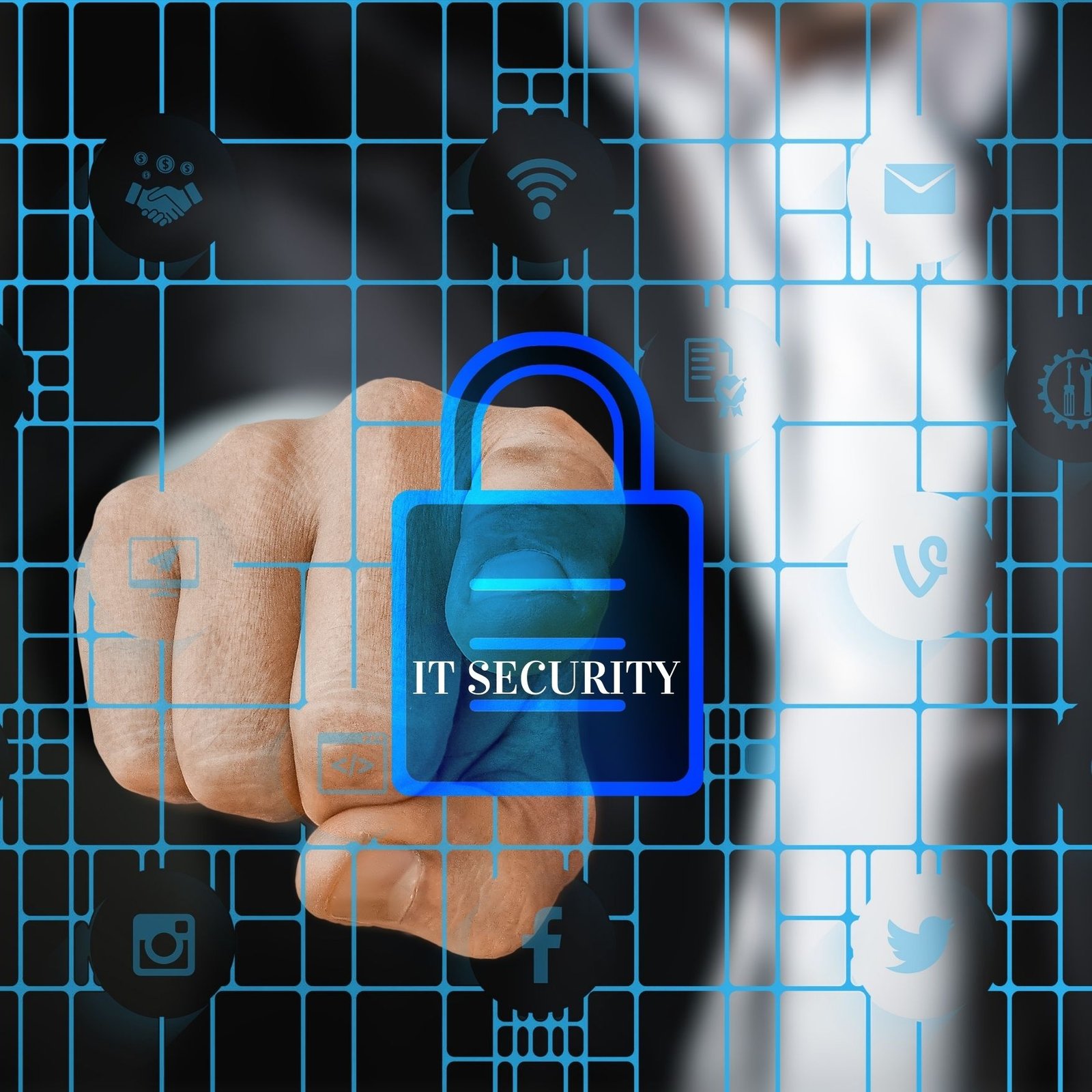Table of Contents
1. Understanding the Importance of IT Security in Business
Cybersecurity isn’t just a buzzword anymore—it’s the lifeblood of any modern business. Whether you’re running a small eCommerce store or managing a global corporation, your digital assets are under constant threat. Hackers don’t discriminate. If you have data and an internet connection, you’re a target.
Why Businesses Are Prime Targets
Let’s face it—data is the new oil. Every time your employees log in, customers submit personal information, or systems process payments, you’re collecting a goldmine of data. Cybercriminals thrive on this. They know that even one small breach can open the door to financial records, trade secrets, customer information, and more.
But here’s the kicker: small and medium-sized businesses (SMBs) are the most common targets. Why? Because they often lack the robust IT infrastructure of large enterprises. It’s like leaving your front door wide open and wondering why you got robbed.
Real-World Cyberattack Examples
In 2021, the Colonial Pipeline ransomware attack disrupted fuel supplies across the eastern U.S., causing panic and gas shortages. That wasn’t a sci-fi movie—that was real life. A single compromised password caused $4.4 million in ransom to be paid.
Even smaller companies aren’t safe. In 2022, a small law firm in Texas got hit by a phishing email. One click, and over 100,000 sensitive client files were encrypted. They spent weeks and thousands of dollars recovering.
2. Conduct a Comprehensive IT Security Audit
Before you can fix vulnerabilities, you’ve got to find them. That’s where an IT security audit comes in. Think of it as a deep dive into your digital infrastructure—looking under the hood to see what’s working, what’s failing, and what’s screaming for help.
What an IT Audit Involves
An IT audit covers everything from your firewalls and antivirus to your network configurations, employee access levels, and even third-party apps. It’s not just about tools; it’s about policies, procedures, and human behavior.
You need to ask:
- Are my employees using secure passwords?
- Who has access to sensitive files?
- Are we using outdated software?
- Is our Wi-Fi secured?
These are the blind spots attackers exploit. By shining a light on them, you give your business a fighting chance.
Tools and Checklists to Use
Here are some essentials for a bulletproof audit:
- Nmap – to scan your network for open ports
- Wireshark – to monitor live traffic
- Nessus – to scan for vulnerabilities
- Microsoft Baseline Security Analyzer (MBSA) – for a quick security snapshot of Windows systems
Pair these tools with a custom checklist that includes:
- Password policies
- User access reviews
- Backup verification
- Software update logs
- Incident response readiness
Don’t just do an audit once and forget about it. Make it a routine—quarterly if you can. That way, you’re always one step ahead of threats.
3. Implement Multi-Factor Authentication (MFA) Everywhere
You wouldn’t leave your house unlocked, right? So why trust your business systems with just a password? Multi-Factor Authentication (MFA) adds a second layer of security—like a digital deadbolt.
Why MFA is a Game-Changer
Most breaches happen due to weak or stolen passwords. MFA blocks 99.9% of automated cyberattacks. That’s not hype—that’s straight from Microsoft. It requires users to verify their identity using two or more methods:
- Something they know (password)
- Something they have (smartphone, token)
- Something they are (fingerprint, facial recognition)
It’s like building a moat around your castle. Even if someone steals your password, they still can’t get in without the second factor.
Best Practices for MFA Deployment
Rolling out MFA company-wide can be a pain if not done right. Here’s how to do it smoothly:
- Start with critical accounts: Admin logins, financial platforms, and email servers should be prioritized.
- Use authenticator apps: Google Authenticator, Microsoft Authenticator, or Authy are safer than SMS codes.
- Educate your team: Don’t just implement MFA. Teach employees why it matters and how to use it properly.
Bonus tip? Enforce MFA for VPN access and cloud apps like Office 365, Salesforce, and Dropbox. It’s a low-effort, high-impact move.
4. Train Your Employees to Be Human Firewalls
You can have the best tech in the world, but if one employee clicks a bad link, it’s game over. Human error is the #1 cause of security breaches, and phishing emails are enemy number one.
Cybersecurity Awareness Programs
Training isn’t a one-and-done PowerPoint. It’s an ongoing process. Create a security-first culture where employees know how to:
- Spot phishing attempts
- Create strong passwords
- Avoid risky downloads
- Report suspicious activity immediately
Run mock phishing tests to see how alert your team is. Provide feedback. Make it fun—gamify training sessions with rewards for top performers.
Social Engineering: The Silent Killer
Social engineering is where hackers manipulate people into giving up confidential info. It’s sneaky and devastating. Imagine someone calling your office pretending to be IT and asking for a password reset. Scary, right?
Teach your employees to:
- Always verify identities
- Never share sensitive info over email or phone
- Challenge unusual requests, even if they seem urgent
Trust is good. Verification is better.
5. Secure Endpoints With Enterprise-Level Solutions
Every device connected to your network—laptops, desktops, smartphones—is a potential gateway for cyber threats. That’s why endpoint security is non-negotiable.
Endpoint Detection and Response (EDR) Tools
EDR goes beyond basic antivirus. It monitors, detects, and responds to threats in real-time. If malware slips through, EDR can isolate the device and stop it from spreading.
Some top-notch EDR solutions:
- CrowdStrike Falcon
- SentinelOne
- Sophos Intercept X
They offer:
- Behavioral analysis
- Threat intelligence
- Automated remediation
Mobile Device Management (MDM)
With remote work on the rise, phones and tablets are now business tools. MDM solutions let you control, encrypt, and wipe corporate data on mobile devices if lost or stolen.
Look into:
- Microsoft Intune
- VMware Workspace ONE
- Jamf for Apple devices
Combine MDM with policies that enforce screen locks, app controls, and secure Wi-Fi usage. Don’t leave any digital door unlocked.
6. Keep Software and Systems Regularly Updated
Imagine this: You install a new app, forget about it, and months later—bam!—a hacker finds an old vulnerability and gets in. This is exactly what happens when software and systems aren’t kept up-to-date. Patching vulnerabilities is one of the easiest, most effective ways to block hackers. But you’d be surprised how many businesses drop the ball here.
Why Updates Matter
Every time developers roll out an update, they’re often plugging up known security holes. If you skip updates, you’re basically leaving your digital doors wide open. Hackers love this. They have automated bots scanning the web 24/7 for outdated systems. One slip-up, and your business could be compromised.
Remember WannaCry? That ransomware attack spread like wildfire in 2017 simply because businesses hadn’t installed a critical Windows update. It cost companies billions—and all of it could’ve been prevented with one update.
Automating the Update Process
Manually updating software across an entire organization? That’s a logistical nightmare. Instead, use automation tools to take the load off your team.
Here’s how:
- Use patch management software like Automox, ManageEngine, or PDQ Deploy to push updates organization-wide.
- Enable automatic updates for your OS, antivirus, browsers, and apps wherever possible.
- Set up a monthly maintenance schedule to audit devices, ensuring everything is current.
Pro tip: Don’t just update—test first! Especially on mission-critical systems. Roll updates out in stages, starting with non-essential systems, to make sure they don’t break anything.
Also, don’t forget to update firmware and hardware drivers. Routers, printers, and IoT devices are often overlooked and can be easy targets if left unsecured.
Staying up-to-date is like keeping your armor polished. It may seem routine, but it can be the shield that saves your business from a catastrophic breach.
7. Encrypt Everything – Especially Sensitive Data
Encryption isn’t just for spies and secret agents—it’s your business’s best defense against data theft. Whether it’s customer info, financial records, or internal communications, encrypted data is unreadable to unauthorized users. Even if hackers get in, all they’ll find is digital gibberish.
Types of Encryption You Need
There are two main types of encryption every business should implement:
- Encryption at rest – Secures data stored on devices, hard drives, and servers.
- Encryption in transit – Protects data as it moves between devices and across networks.
You also want to use end-to-end encryption for messaging apps and emails. That way, only the sender and receiver can read the message.
Look for software that offers AES-256 encryption—the industry gold standard. It’s the same level of security used by banks and governments.
How to Encrypt Data at Rest and in Transit
Start by enabling full-disk encryption (FDE) on all company devices. For Windows, that’s BitLocker; for Mac, it’s FileVault. These tools encrypt everything on the disk automatically.
Next, secure communication channels:
- Use SSL/TLS certificates for websites and internal tools.
- Implement VPNs for remote workers to ensure secure connections.
- Adopt encrypted email services like ProtonMail or use plugins like Virtru with Gmail.
Cloud storage? Make sure your provider encrypts data both at rest and in transit. Services like Google Workspace and Dropbox Business do this by default, but always verify.
And remember—encryption is only as strong as your key management. Store keys securely, rotate them regularly, and restrict access only to those who truly need it.
Encrypting your data is like putting it in a locked box inside a vault. Even if someone breaks in, they’ll need a second (or third) key just to understand what they’ve stolen.
8. Leverage Cloud Security Tools and Features
The cloud has revolutionized business—but it’s also introduced new security challenges. Too many businesses rush into cloud adoption without taking the time to lock it down. Misconfigurations, weak access controls, and unmonitored usage can all lead to serious breaches.
Cloud Misconfigurations and How to Avoid Them
Did you know that 80% of cloud security breaches are caused by misconfigured settings? It’s not always the technology—it’s how it’s set up.
Common mistakes include:
- Publicly accessible S3 buckets
- Excessive user permissions
- No logging or monitoring
- Unencrypted storage
The solution? Use configuration management tools like AWS Config, Azure Security Center, or Google Cloud Security Command Center. These help you identify and fix weak spots automatically.
Also, follow the principle of least privilege. Only give users access to what they absolutely need—no more, no less.
Built-in Cloud Security Best Practices
Cloud providers offer a buffet of built-in security features—you just have to use them:
- Identity and Access Management (IAM): Control who has access to what.
- Multi-Factor Authentication (MFA): Add a second layer of security.
- Audit Logs: Keep track of every action taken in the cloud.
- Firewalls and Virtual Private Clouds (VPCs): Isolate sensitive environments.
And don’t forget about cloud backups and disaster recovery. Services like AWS Backup or Google Vault ensure you’re never caught off guard.
Regularly audit your cloud setup and stay up-to-date with your provider’s security tools. The cloud is powerful, but it needs oversight to be safe.
9. Backup Strategically and Test Recovery Often
Backups are your business’s safety net. But here’s the deal: if you’re not backing up properly—or worse, not testing those backups—you’re living dangerously. Ransomware, system crashes, or accidental deletions can wipe out years of work in seconds.
3-2-1 Backup Strategy
This is the gold standard of backup strategies:
- Keep 3 total copies of your data.
- Store 2 backups on different storage mediums (e.g., local server and external drive).
- Keep 1 backup offsite or in the cloud.
It’s simple, but wildly effective. You’ll thank yourself when disaster strikes and your data is still safe.
Use automated backup tools like:
- Acronis
- Veeam
- Backblaze
Cloud backup services like Google Drive, iDrive, or AWS Glacier are also great for offsite storage.
Why Testing Backups is Crucial
Having backups is one thing. Knowing they actually work is another. Regularly test your recovery process to make sure everything restores correctly and quickly.
Here’s how:
- Schedule quarterly recovery drills
- Randomly select files to restore and verify integrity
- Document every step of the process for accountability
Also, make sure your backup system includes versioning. That way, if ransomware corrupts today’s data, you can roll back to yesterday’s clean version.
Backing up without testing is like buying insurance but never reading the fine print. When disaster hits, you might find out it doesn’t actually cover what you thought it did.
10. Monitor Everything With SIEM and SOC Tools
You can’t protect what you can’t see. That’s where real-time monitoring comes into play. SIEM (Security Information and Event Management) and SOC (Security Operations Center) solutions act like your business’s 24/7 surveillance system.
SIEM vs. SOC: What You Need to Know
SIEM tools collect and analyze logs from all across your network—firewalls, endpoints, servers, and more. They look for suspicious patterns, alert you in real-time, and help with incident response.
Popular SIEM tools include:
- Splunk
- IBM QRadar
- LogRhythm
A SOC is a team of security analysts (in-house or outsourced) that monitor and respond to threats around the clock. Think of them as your digital bodyguards.
Real-Time Monitoring Advantages
Real-time monitoring means:
- Faster detection of threats
- Instant alerts when something looks off
- Detailed reports for compliance and audits
- Proactive prevention, not just reaction
Combine SIEM and SOC for full visibility into your network. It’s like having night-vision goggles and a trained sniper on your security team.
Bonus tip? Use tools like ELK Stack, AlienVault OSSIM, or Graylog for a budget-friendly way to get started with SIEM if enterprise tools are too pricey.
11. Have a Solid Incident Response Plan (IRP)
Let’s be real—no system is 100% hack-proof. Even with all the right security in place, breaches can and do happen. That’s why having a well-thought-out Incident Response Plan (IRP) is absolutely non-negotiable. Think of it as your company’s digital fire drill. You don’t wait for flames to start practicing how to exit the building, right?
Creating a Battle-Tested IRP
An effective IRP does more than just tell you what to do after a breach. It outlines step-by-step how to detect, contain, eradicate, recover, and learn from any security incident. The plan should be clear, actionable, and tailored to your business structure.
Start by identifying and defining:
- Roles and responsibilities – Who leads the response? Who contacts clients? Who talks to law enforcement?
- Threat categories – Define what counts as an incident (e.g., data leak, ransomware, DDoS).
- Communication protocols – Set rules for internal and external communication.
- Response playbooks – Create specific actions for different scenarios like malware infection or insider threats.
Involve every department. From IT to HR, legal to PR—cyber incidents affect more than just your servers.
Test your IRP regularly with simulated attacks. These tabletop exercises are invaluable for uncovering flaws before a real crisis hits.
Post-Incident Analysis and Lessons Learned
What happens after the dust settles? That’s where the real growth happens. Every attack, even a minor one, is a learning opportunity.
Do a full post-mortem:
- What worked?
- What failed?
- How long did response and recovery take?
- What can you improve?
Document everything and update your IRP based on these findings. Security is a living, breathing part of your business—it should evolve with each lesson.
Remember, companies that respond quickly and transparently to security incidents don’t just survive—they earn trust. And in today’s digital world, trust is currency.
Conclusion
There you have it—11 mind-blowing IT security hacks that can transform your business into a digital fortress. This isn’t about scaring you—it’s about empowering you. Cyber threats are real, evolving, and relentless. But with the right knowledge and tools, you can be two steps ahead.
From educating your team to automating updates, leveraging cloud security to building a rock-solid response plan—these strategies aren’t reserved for Fortune 500 companies. They’re accessible, practical, and crucial for businesses of all sizes.
The truth is, cybersecurity isn’t a one-time fix—it’s a culture. It’s about being proactive instead of reactive. Every minute you invest in securing your systems, training your people, and auditing your tech stack is a minute spent protecting your reputation, your customers, and your bottom line.
Don’t wait for a breach to get serious about security. Start now. Take these steps, one at a time, and build a business that can thrive—even in the face of digital threats.
Because in the end, strong IT security isn’t just about avoiding disaster. It’s about unlocking growth, stability, and peace of mind in a world where data is king.









